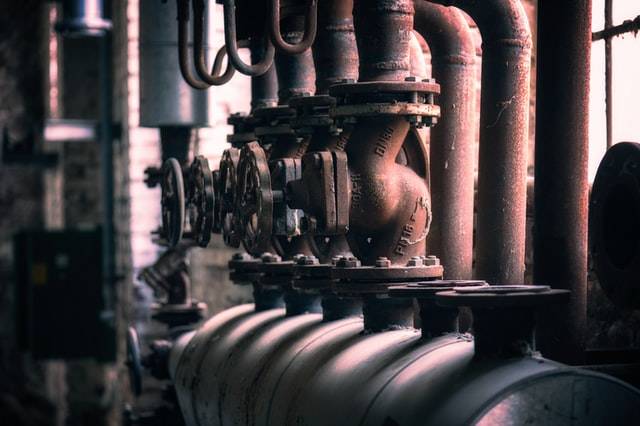Most of a boiler’s failures involve a breach of the boiler’s pressure vessel/heat exchanger, either as a result of corrosive activity degrading the vessel material or mechanical failure induced by thermal loads causing fractures or component separation. During regular operations, there may even be no evident symptoms.
A failure might happen gradually over time or suddenly as a result of a shift in environmental factors. Thus, inspections on a regular basis help to avoid unwanted surprises. Repairing or replacing the pressure vessel alone may be an option for smaller and newer boilers.
Read on to discover the situations to watch out for to avoid breaking your boiler.
The Water-Side Corrosion
While irregular water loading can cause some corrosion, inadequate monitoring and chemical treatment can cause an acute pH imbalance, which can quickly damage a boiler. Materials used in pressure vessels physically melt, causing widespread and irreversible damage. Experts in water quality and chemical treatment should be consulted to help with prevention efforts.
Various heat exchanger arrangements need a variety of fluid chemistries. These containers must be handled differently than copper, stainless steel, or aluminium exchangers. Meanwhile, smaller-volume fire-tube boilers are treated differently. In addition to higher temperatures, steam boilers often require more make-up water.
Boiler manufacturers should describe their products’ water quality standards, including the chemical cleansers and treatment agents that are permitted. Designers and maintenance employees should get this information before issuing a purchase order, as correct water quality is always a warranty issue. All other system components, including pump and valve seals, should be tested for chemical compatibility. Prior to final system fill, treatment personnel should cleanse, flush, and passivate systems. The fill fluid should be inspected and treated in accordance with the boiler’s requirements. Remove strainers and filters, clean them, and mark them with the date.
Treatment technicians should oversee maintenance workers until they are pleased with the results. In addition to frequent fluid analysis, chemical treatment skills should be enlisted.
The Water-Side Calcification
Continuous make-up water introduction from water or steam leaks can quickly coat heat-exchanger components with hard-scale, providing an insulating layer that causes stress fractures from overheating. Certain water supplies contain enough dissolved minerals to cause mineral build-up and heat exchanger hot-spot failure as soon as they are filled. Inadequate cleaning and flushing of new and existing systems, as well as insufficient filtration of fill water particles, can also lead to heat exchanger contamination and obstruction. As a result, the boiler becomes noisy during burner operation, alerting maintenance personnel to the problem.
If inner surface calcification is discovered early enough, a clean heat exchanger can be restored to like-new condition. All of the aforementioned recommendations, which include the involvement of water-quality specialists, are crucial in resolving these difficulties.
The Fire-Side Corrosion
Acidic condensate from any fuel can form when the surface temperature of a heat exchanger falls below the dew point. Condensing boilers drain the condensate through heat exchangers built of acid-resistant materials such as stainless steel and aluminium. On the other hand, non-condensing boilers rely on combustion gases that are always above the dew point or quickly vaporize after a brief warm-up period. Steam boilers are typically immune to this problem due to their high working temperatures.
This happens due to weather-responsive outdoor reset controls, low-temperature Hydronics, and deep-night setback systems. The incorporation of these elements into existing high-temperature systems resulted in the premature failure of a substantial number of traditional hot-water boilers. Mixing valves, shunt pumps, and other equipment and control systems are used to protect high-temperature boilers in mixed mode.
To avoid condensing conditions in the boiler, several systems and controls must be kept operational. The designers and commissioning agency are initially held liable, with continuous maintenance efforts. Notably, low-temperature limit devices and alarms are often utilized as an additional layer of protection in conjunction with protective apparel. Operators must be instructed to avoid circumventing these safety precautions.
Conclusion
A sudden breakdown of a boiler’s pressure vessel is commonly “fixed” by getting a replacement boiler. However, know that such boiler issues can be avoided by putting preventative measures in place and enforcing them. As you maintain your boiler with professional assistance, you can save money in the long run and keep everybody safe in the process.
Are you looking for boiler services for hire? London Climate Hire is an esteemed team of HVAC specialists that can provide you with your needs. Give us a call today!

